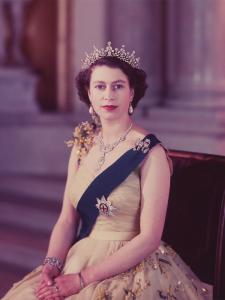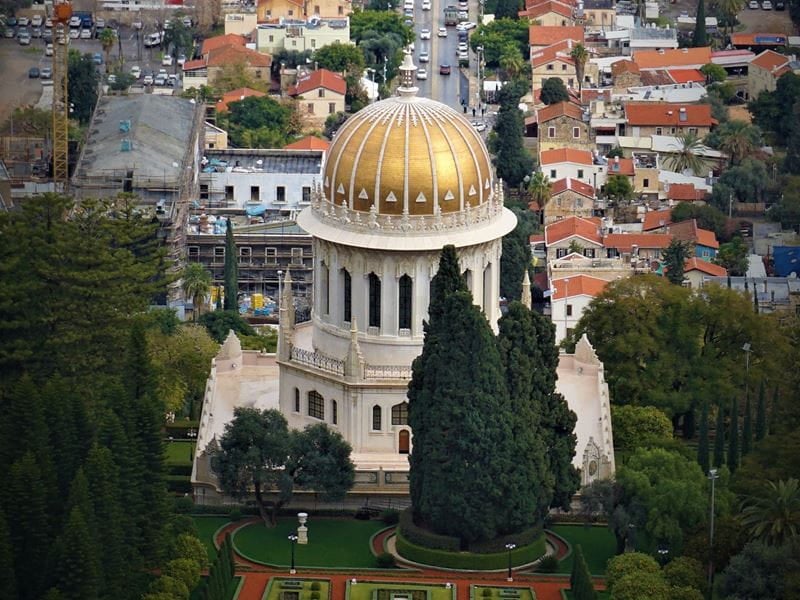
- Trending:
- Pope Leo Xiv
- |
- Israel
- |
- Trump
- |
- Social Justice
- |
- Peace
- |
- Love
The 100 Most Holy Places On Earth
Shrine of Bahá'u'lláh

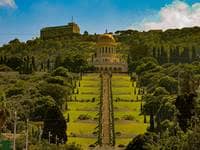

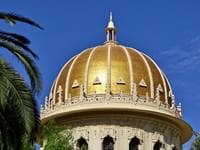
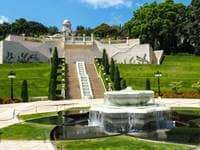
Associated Faiths:
While it does draw some from traditions outside of the Baháʼí faith, most non-Baháʼís who visit are either non-religious tourists, practitioners of one of the dharmic tradition, or new-age Christians
Accessibility:
Open to visitors.
Annual visitors: 1,000,000
History
Acre’s Shrine of Bahá'u'lláh is a 19th century house which today holds the remains of Bahá'u'lláh, the founder of the Baháʼí Faith. The Mansion of Bahjí is the adjacent summer house in which Bahá'u'lláh was residing at the time of his death (in 1892 CE). Upon his passing, one of the buildings on the sprawling estate became the location in which Bahá'u'lláh was interred. And, over time, updates were made to make the site a pleasant place of pilgrimage for members of the Baháʼí faith—and others who may wish to visit.
Prior to the construction of several buildings on the site, what would become the Shrine of Bahá'u'lláh had originally been a sprawling garden—owned and planted by Acre’s then ruler (Sulayman Pasha), as a gift for his daughter Fatimah (sometimes transliterated as Fatimih). It remained in the family for some time, being used for several purposes—including as the “headquarters” of the Ottoman General, Ibrahim Pasha. The Pasha family had several buildings constructed on the site, in addition to an aqueduct, so that the gardens would retain their lushness with minimal effort.
In time, the plot of land and its structures were sold to a Christian family. However, in 1870, a portion of the land was then sold to ʻUdi Khammar, who knocked down a smaller structure in order to construct the “Mansion of Bahji” on the same spot. As a consequence of an 1879 epidemic in the area, the owners left the mansion, letting the property sit vacant. Eventually, Mírzá Muhammad ʻAlí—one of the sons of Bahá'u'lláh—occupied the site until 1922, when Acre’s governor demanded the return of the keys to the mansion and shrine. That lasted one year, and then the keys were given to Bahá'u'lláh’s great-grandson, and the property has remained in Baháʼí hands ever since.
While the Shrine of Bahá'u'lláh is not the same as the “Mansion,” both are on the same plot. And both the shrine and the mansion are owned and maintained today by the Baháʼí Faith. As a repurposed 19th century building, the shrine (once Bahá'u'lláh had been buried in it) had a number of upgrades, including the addition of a glass roof, and a small interior garden with a path lined with Persian rugs. These sort of upgrades, and others like them, were done with the view that this site would become a sacred pilgrimage site for practicing Baháʼís.
Religious Significance
The Shrine of Bahá'u'lláh, in addition to its Mansion and gardens, is among the most “sacred spaces” upon the face of the earth for Baháʼís. Indeed, they are common Baháʼí pilgrimage sites that most hope to visit at least once in their lifetime. What makes these sites holy is not simply that the founder of the faith dwelt, died, and was interred there (though those add to the holiness).
Rather, it is the fact that practitioners of the Baháʼí tradition perceive Baháʼu'lláh as a “manifestation of God”—as a chosen messenger, akin to the Buddha, Jesus, or the Prophet Mohammed—which makes these sites so sacred. Indeed, the title Baháʼu'lláh means “Glory of God”—which gives one a sense of how this most recent of God’s “messengers” is perceived by adherents to the Baháʼí faith.
In almost every religious tradition, pilgrimages to the birthplace of, or burial place of, the faith’s founder are seen as an act of piety—and an act of potentially profound spiritual influence. To visit the very spot where the most holy of divine messengers walked and talked, and to stand at the site of his holy remains, is for many a sacred encounter. Since Baháʼís are no different in this regard, their desire to visit the location of several significant events in the life of their founder, Baháʼu'lláh, is understandable.
And, for Baháʼís, since they are a tradition that seeks the uniting of all religions, all truths, and all governments, Baháʼu'lláh is not perceived as God’s messenger to Baháʼís. Rather, he is a messenger to all human beings. Consequently, the Shrine of Bahá'u'lláh is a place of pilgrimage for the world. And it is through non-Baháʼís learning of and embracing the universal message of Bahá'u'lláh that his vision will be realized, the world will be filled with love, and all of the artificial divisions that exist (and do harm) in our world today shall eventually be erased.
So sacred were the life and teachings of Bahá'u'lláh—and so holy is his gravesite—that when Baháʼís offer their prayers (multiple times each day), they do so facing the Shrine of Bahá'u'lláh. Indeed, like the Kaaba for Islam, the Shrine of Bahá'u'lláh is called by Baháʼís “the Qiblih,” which means “the direction” (in Arabic). It is the “direction” one faces during “obligatory” daily prayers.
It is the “direction” one travels to make a pilgrimage. It is the “direction” Baháʼís bury their dead. And it is the “direction” of the greatest of God’s messengers. Baháʼís don’t worship the shrine or Bahá'u'lláh’s remains. However, owing to the fact that he is the “Glory of God,” their reverence for him and his remains is very high.
Of the Shrine of Bahá'u'lláh, the Baháʼí faith has declared: “To set foot in the heart of the site is to enter a place of peace and serenity, a wall-less sanctuary that is protected without being enclosed.” Bahá'u'lláh taught that God willed peace for the world, and the Baháʼí faith has as one of its primary foci world peace. Thus, this “sacred site” offers the world a small taste of what could be, were we to quit fighting and all join hands in fulfilling the vision of Bahá'u'lláh.



